Visiting a construction site occasionally is a good practice for someone who covers construction technology. I received an invitation from Hilti, who wanted me to see their robot, Jaibot, on YIT’s Tuultenristi site in Espoo, Finland.
The Tuultenristi project comprises apartments, offices, and retail spaces. The building site I visited will be complete in March 2023. It is the first Finnish site on which Hilti has used Jaibot, its drilling robot, which was launched in late 2020.
Veikko Vento, the Site Supervisor with YIT, says they didn’t have to think twice about letting the robot onto the site.
“Hilti offered us an opportunity to try Jaibot. The cost versus the performance seemed all right,” Vento states. “Besides, someone has to be the first, and we decided to test it on a few floors. Hilti would also get feedback on using the robot in a real environment.”
Astonishing performance
The robot was eventually used on three floors of the site, to drill holes in the ceiling for MEP hangers. When drilling, it used its vacuum cleaner head to capture the dust that otherwise would have ended up on the floor.
One reason for companies to use robots is speed. Jaibot did not disappoint YIT in that respect. At its best, it drilled 90 holes per hour, an unofficial world record. Two workers with scissor lifts could theoretically achieve similar results, but only if the holes to be drilled were measured and marked in advance. Jaibot positioned and marked the holes by itself.
Overhead drilling is an exhausting and sometimes hazardous task. Jaibot accelerated the MEP installation considerably and required fewer site staff than traditional methods.
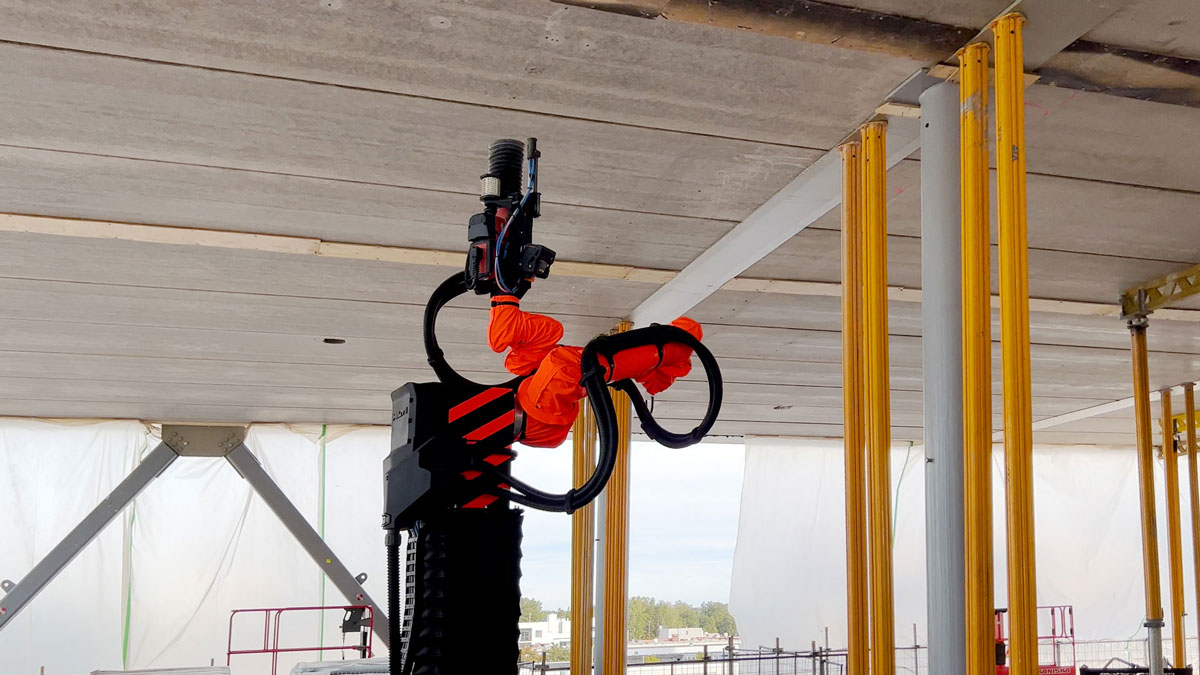
Some preparation is required
A Jaibot arrives on site in a small container that can be hoisted to the floor where it will operate. On the YIT site, a crane was used to lift the cabinet, and workers used a pump cart to move it around. The cabinet functions as a night-time storage unit and a charging station. The robot must be recharged after every eight hours of operation.
Jaibot is a semi-autonomous robot. An operator uses a remote control to drive it to the required location. The operator then sets up Hilti PLT 300, a total station, on a tripod. It locates itself automatically, using small alignment markers that the site surveyor has set up in advance. PLT 300 sends data to the robot’s prism during drilling. The robot can move autonomously in a two-meter diameter.
YIT’s Vento reminds us that a worker is more adaptable to changing conditions than a robot, and can access places where the robot can’t go. The site floor must be free from obstacles if the robot is to work efficiently. Large open spaces before drywall installation are optimal.
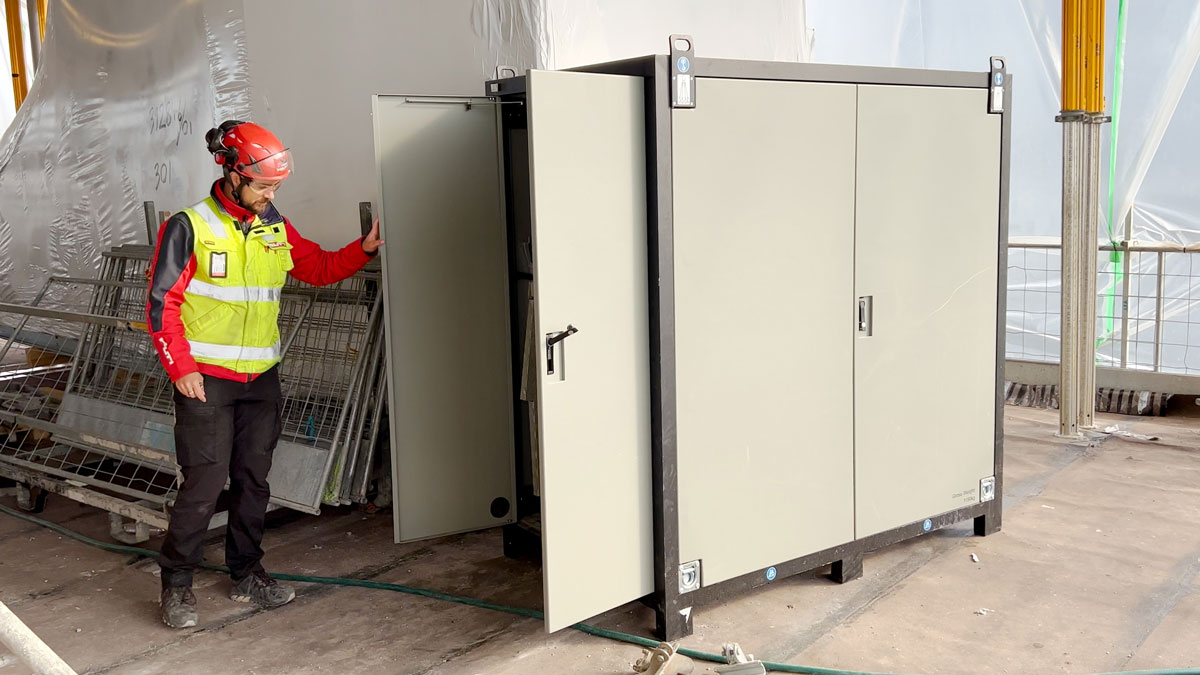

From BIM to the jobsite
Jonne Savo, an advanced measuring technology specialist at Hilti, was the Jaibot operator on the YIT site. He prepared it and demonstrated its operation. Before starting it up, he showed its storage compartments that held a range of accessories.
Savo used a tablet with steering knobs to direct the robot to the required location. On the screen was a map of the locations of the anchor points. It came from a cloud service that Hilti runs.
The map was extracted from an accurate BIM model of the installations and hangers. It was the work of Hilti’s engineering team. They specialize in detailed MEP installation design in demanding projects such as hospitals, offices, and high-rise buildings.
At least in Finland, MEP designers don’t typically undertake hanger design. Consequently, the installers on site must decide where to place hangers and support structures, which is not very efficient and can lead to clashes. Systematization of hangers can reduce installation times by double-figure percentages, according to Hilti’s Senior Key Account Manager Toni Kamula.
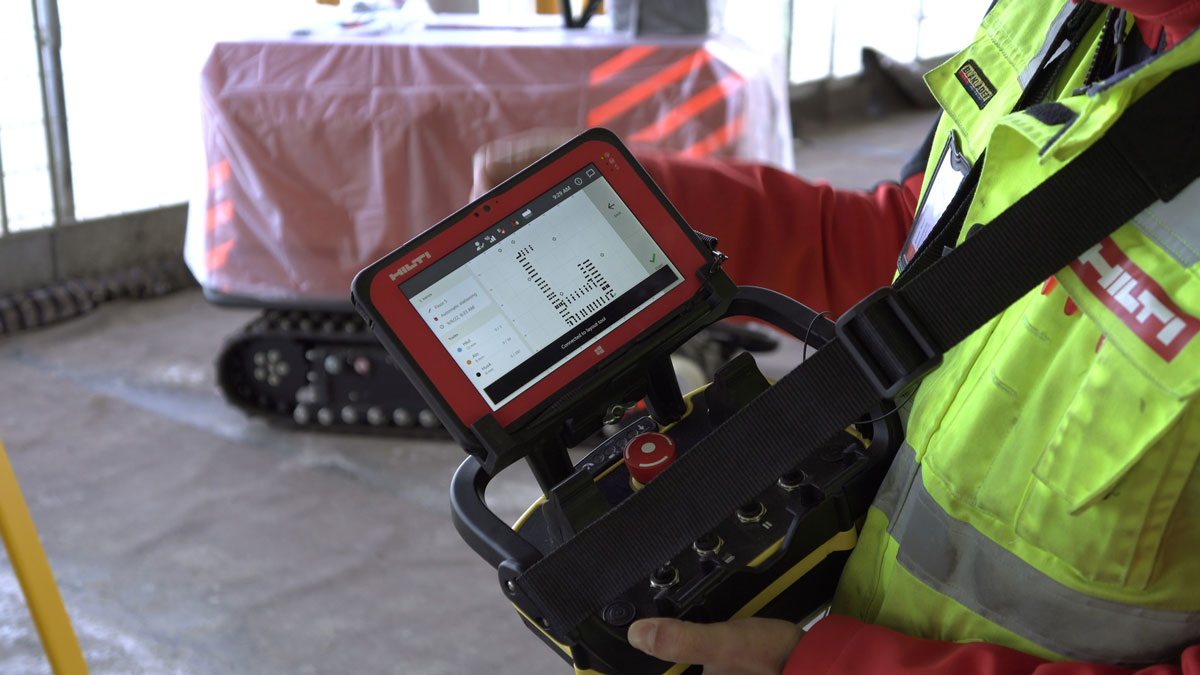

A promising test
The robot has an arm that holds the drill, the cleaner, a prism, and a 3D camera. If necessary, the operator can adjust the robot’s position or arm with the remote control. Jaibot can reach and drill ceilings from 2,65 up to 5 meter high.
Jaibot uploads statistical information to the cloud; for example, the number of holes planned and drilled on each floor. The data is available on the remote controller and with dedicated Hilti software elsewhere.
Jaibot turns on its vacuum cleaner, drills a hole, and then moves to the position of the next hole. It optimizes its route as it moves along.
A machine that always knows where it is on site offers extra benefits. “You can add new holes to the drilling plan on the fly, if necessary,” Savo explains.
What’s the ROI?
You may wonder whether a robot requires too much preparation and extra design work, compared with manual labor.
“Hilti has done global research on Jaibot’s performance, and found that it speeds up drilling and measurement by 30 percent,” Savo reminds us. “And when you install a rod, you know that the holes are in the right place.”
Vento believes that the cost of the detailed design is the decisive factor in the ROI of the robot. On the other hand, accurate design and systematization speed up installation. The improved safety at the workplace is not to be ignored, either.
Jaibot does not always require a detailed BIM model, if the installation plan is simple or systematic. The hole locations can be laid out on a 2D floor plan. In addition, it can paint and color-code markers that replace manual measure-taking.
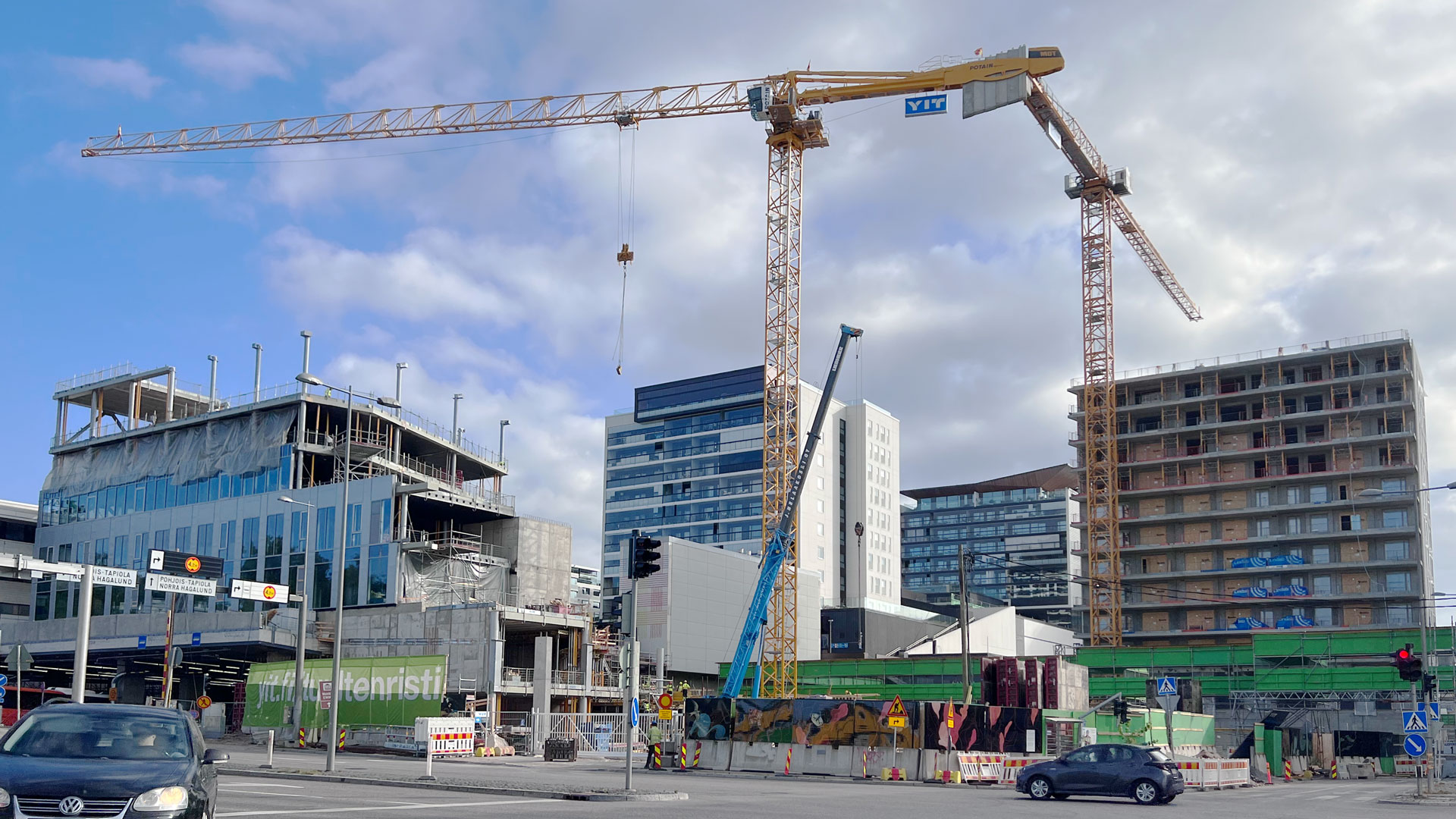

What’s in the future?
Some construction robotics developers are aiming at full autonomy. Others are developing remote operations where one person can simultaneously control several robots, with the help of AI. It will be interesting to see where Hilti takes Jaibot, and other robots they will undoubtedly design.
The Jaibot pilot on the Tuultenristi site was a good start. We will see more collaborative robots in construction, improving productivity and profitability and making sites safer. Shorter project durations reduce energy consumption and material waste, improving the sustainability of construction.
Toni Kamula says that Hilti and YIT will review the pilot and collect the lessons learned for future projects. Veikko Vento is optimistic about the robotic future and will welcome Jaibots on future sites.
View the original article and our Inspiration here

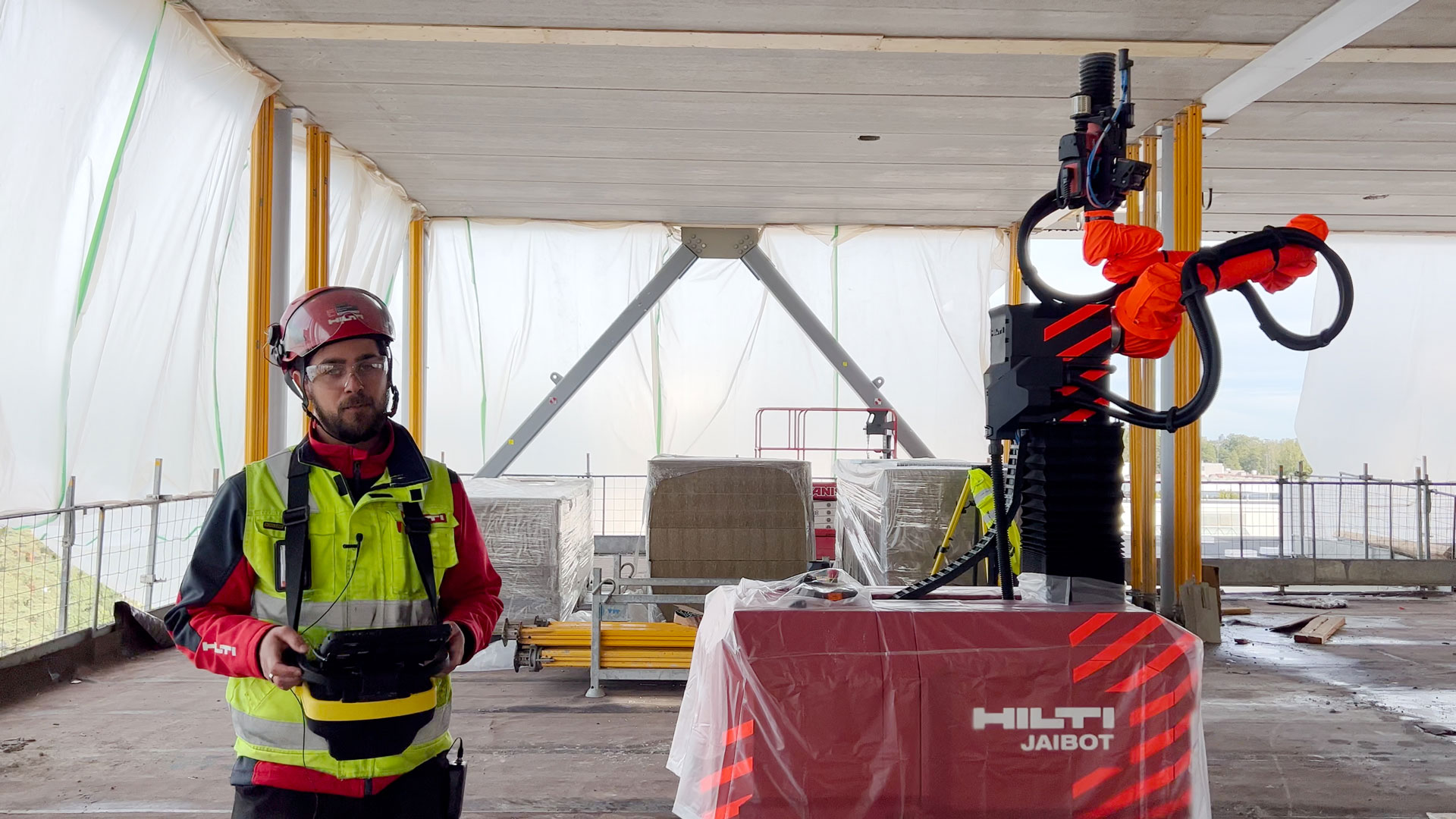
Leave a Reply